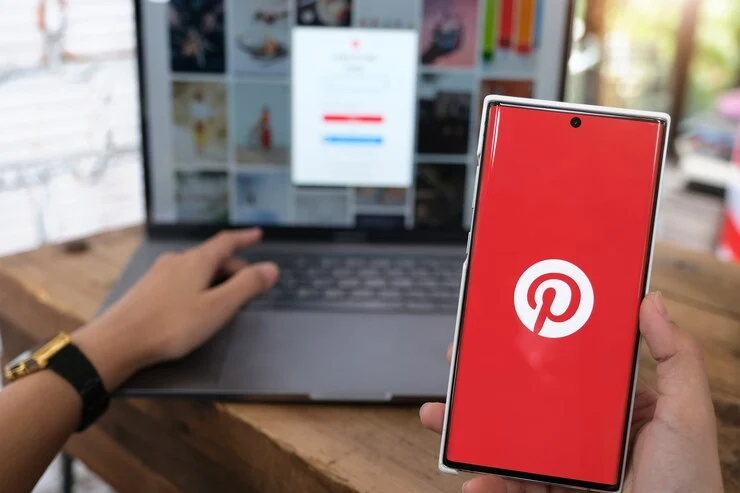Pinterest is more than a visual bookmarking tool — it’s a discovery platform, a powerful search engine, and a goldmine for content creators. While many users treat Pinterest as a place for inspiration, savvy bloggers and business owners know that it’s also one of the best platforms to establish yourself as an authority in your niche.
Whether you blog about food, fashion, finance, wellness, or any topic in between, Pinterest offers the perfect opportunity to showcase your expertise, grow your audience, and earn long-term visibility. But how do you go from casual pinner to trusted authority? Let’s break it down.
Why Authority Matters on Pinterest
Before we dive into the how, it’s important to understand the why. Building authority on Pinterest isn’t just about gaining followers or having viral pins — it’s about becoming a trusted resource in your specific niche.
When users consistently find value in your content, they are more likely to:
-
Save and share your pins
-
Click through to your website
-
Subscribe to your mailing list
-
Trust your recommendations or products
And since Pinterest acts as a search engine, the more relevant and helpful your content is, the more often the algorithm will push it to new users. Authority compounds over time — and Pinterest rewards creators who deliver consistent value.
Step 1: Define Your Niche Clearly
To become an authority, you first need to own your space. Many new Pinterest users make the mistake of pinning everything that interests them, which confuses both followers and the Pinterest algorithm.
Instead, pick a focused niche. Examples include:
-
Keto meal planning
-
Sustainable fashion for moms
-
Budget travel for students
-
Mindful productivity
Then, structure your Pinterest profile around that topic. Your bio, boards, and pin titles should clearly reflect your niche so users immediately know what kind of content to expect from you.
Pro Tip:
Use your profile name to reinforce your niche. For example:
“Emily | Vegan Meal Prep & Recipes” tells users exactly what you’re an expert in.
Step 2: Optimize Your Profile for Credibility
Your Pinterest profile should look polished, professional, and on-brand. Here’s how to optimize it:
-
Use a professional photo or logo
-
Write a keyword-rich bio that includes your niche focus
-
Claim your website to boost credibility
-
Create niche-specific boards with clear, keyworded titles
Make sure your top boards (the ones that show first on your profile) highlight your most important topics. Curate them carefully — the goal is to appear organized, intentional, and knowledgeable.
Step 3: Create Consistent, High-Value Content
If you want to build Authority in Your Niche, you need to consistently publish and share helpful content. This includes blog posts, products, lead magnets, or tutorials that solve problems for your audience.
Every pin you create should point back to a valuable piece of content. For best results:
-
Use high-quality images that match your brand
-
Write clear, benefit-driven pin titles
-
Include relevant keywords in your pin descriptions
-
Stick to vertical image formats (2:3 ratio is best)
The more helpful your content is, the more it will be saved, shared, and surfaced in Pinterest search — reinforcing your status as an expert.
Step 4: Use Keywords Strategically
Pinterest works like a visual Google. To become an authority in your niche, you must speak the language your audience uses to search.
Start with Pinterest’s search bar:
-
Type in a phrase related to your topic
-
Note the suggestions and auto-filled results
-
Use these as inspiration for your pin titles, descriptions, and board names
Also, check out what pins are ranking for your keywords. Observe their formats, headlines, and visuals — then design your own high-value version with a fresh twist.
Step 5: Engage with Your Niche Community
Pinterest may not be a social network in the traditional sense, but engagement still matters. Join group boards relevant to your niche or collaborate with other creators to expand your reach.
Additionally:
-
Comment meaningfully on other people’s Idea Pins or video pins
-
Re-pin content that complements your own
-
Tag other creators when appropriate
These small actions show you’re active and invested in your community — traits that support your authority.
Step 6: Experiment with Idea Pins and Video Pins
Pinterest has been pushing Idea Pins and video content as it competes with platforms like TikTok and Instagram. These formats give you an even better way to educate and inspire your audience.
Here’s how to use them effectively:
-
Create tutorials that showcase your expertise
-
Share quick tips or “how-to” steps in your niche
-
Show behind-the-scenes of your process or content creation
Idea Pins don’t link to external sites (yet), but they boost your visibility and give followers a reason to engage with your profile directly.
Step 7: Analyze and Refine
Use Pinterest Analytics to identify what’s working:
-
Which pins get the most impressions and saves?
-
What boards are bringing the most traffic?
-
Which keywords or designs are performing best?
When you understand what content resonates most with your audience, you can double down on it. Over time, this consistency helps establish you as a trusted go-to source — an authority in your niche.
Final Thoughts
Becoming a Pinterest authority doesn’t happen overnight. But with clear niche positioning, consistent content, and a value-first approach, you can steadily grow your presence and influence.
The key is to show up with purpose. Every pin, board, and post should reinforce your expertise and help your audience in some way. As your visibility increases, so does your authority — and with it, traffic, trust, and opportunities.
So don’t just use Pinterest — own your space on it. With the right strategy and mindset, you can become a leading voice in your niche and build a thriving, Pinterest-powered brand.
